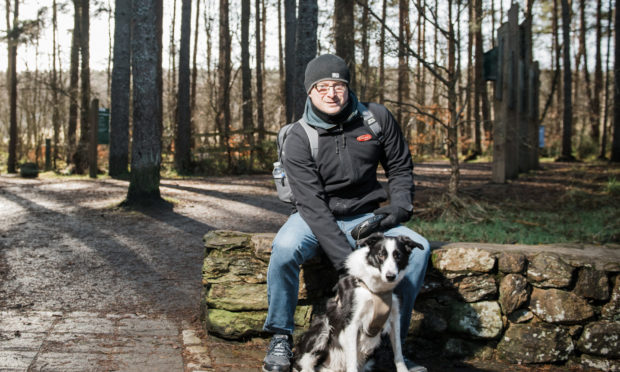Doctors told an Aberdeen man that a “violent sneeze” could have caused him to suffer a stroke which left him unable to walk.
Chris Robinson began to feel dizzy in November 2018 but initially attributed it to tiredness.
When the 40-year-old began to struggle to walk, and felt his right side go numb, he knew something was seriously wrong and rushed to see his GP.
From there he was sent to hospital and was quickly admitted to the stroke unit at Aberdeen Royal Infirmary.
Doctors advised him that he had split a vein in his head which would have been caused by anything from a cough to a violent sneeze.
The business development manager was told it would be a long time before he would be able to walk again.
But now, the inspirational individual is preparing to defy the odds by climbing 10 of Scotland’s highest peaks.
In doing so he hopes to raise £10,000 for the Chest Heart and Stroke Scotland charity.
It will culminate in him climbing Scotland’s highest peak, Ben Nevis, two years on from suffering his stroke.
In 15 months, Mr Robinson has gone from being unable to walk the length of his hospital room to deciding to take on the mammoth challenge.
And with his treasured blind dog, Rex, by his side, he plans to conquer the 10 peaks over the next 10 months – and began the challenge on Sunday by successfully tackling Bennachie.
He said: “I was overcome with determination to get back walking.
“I never stopped to focus too much on what I couldn’t do.
“I put all my energy into getting better and didn’t spend time thinking about what would happen if I didn’t recover.
“With walking being the thing that was most affected by my stroke, I wanted to create a challenge which encompassed it.
“I’ve spent the past year learning to walk again and although I can walk now, I am still only at 80%.
“I have to think about every footstep before I take it.”
Jane-Claire Judson, chief executive at Chest Heart and Stroke Scotland, said: “Chris is an inspiration; to be taking on such a difficult challenge, and especially after being unable to walk just over a year ago is incredible.
“We want people to do more than survive after a stroke, we want them to really live.
“Chris’ story is also an important reminder that there are other, less common signs of stroke.
“Sudden blurred vision, sudden dizziness or a severe headache that comes on quickly with no known cause can also be signs of a stroke.”
To support Mr Robinson’s challenge, go to www.justgiving.com/fundraising/10peaksin10months.
